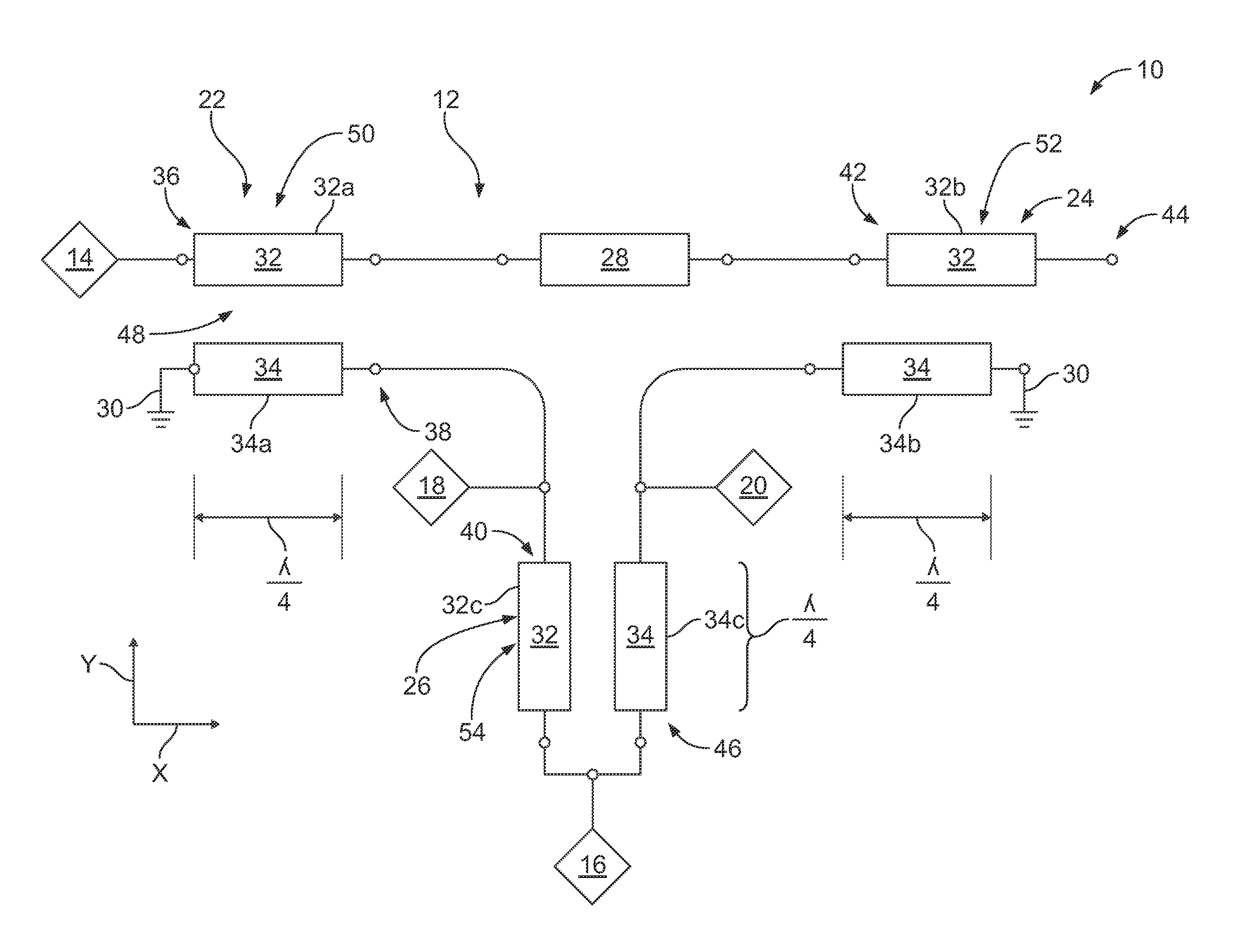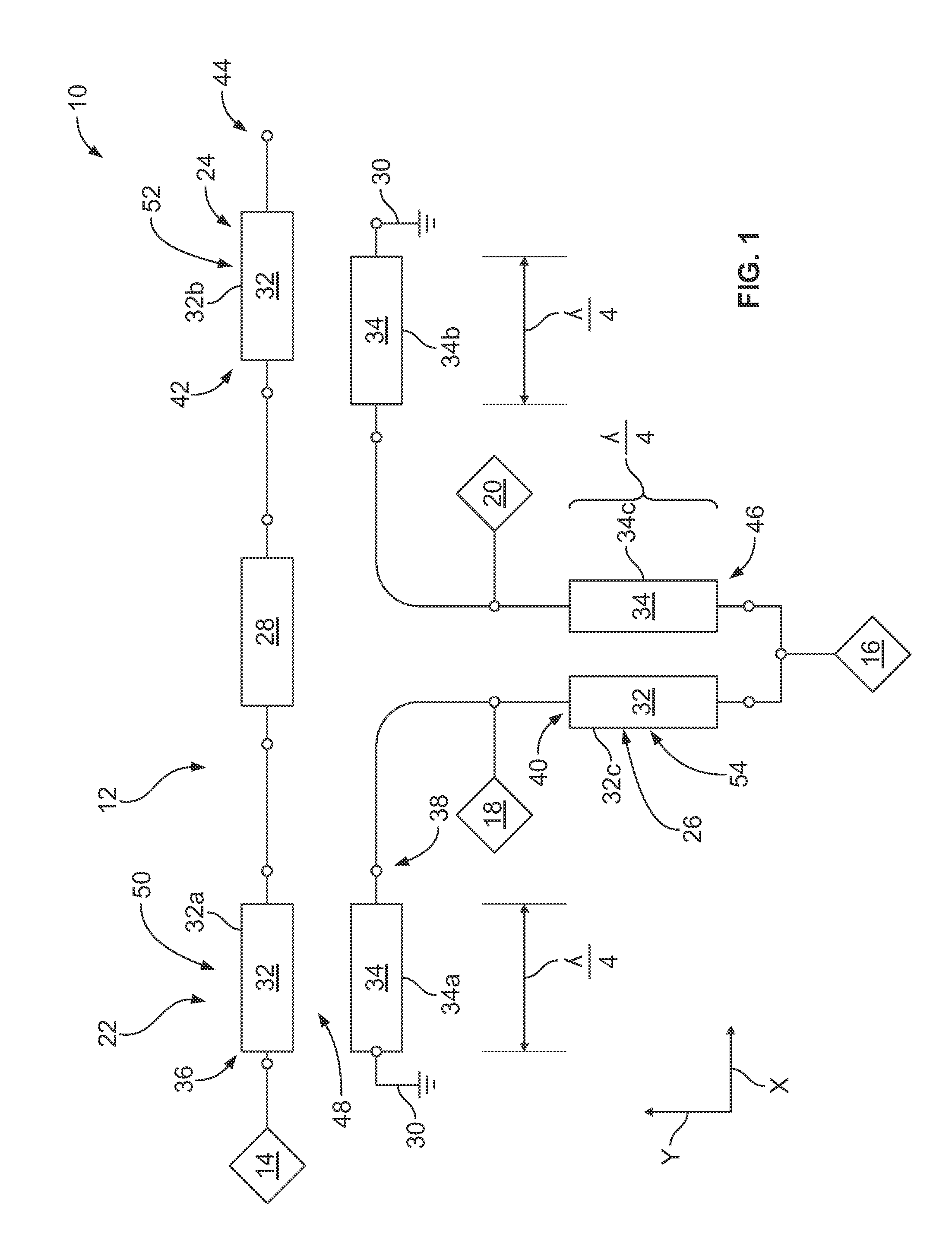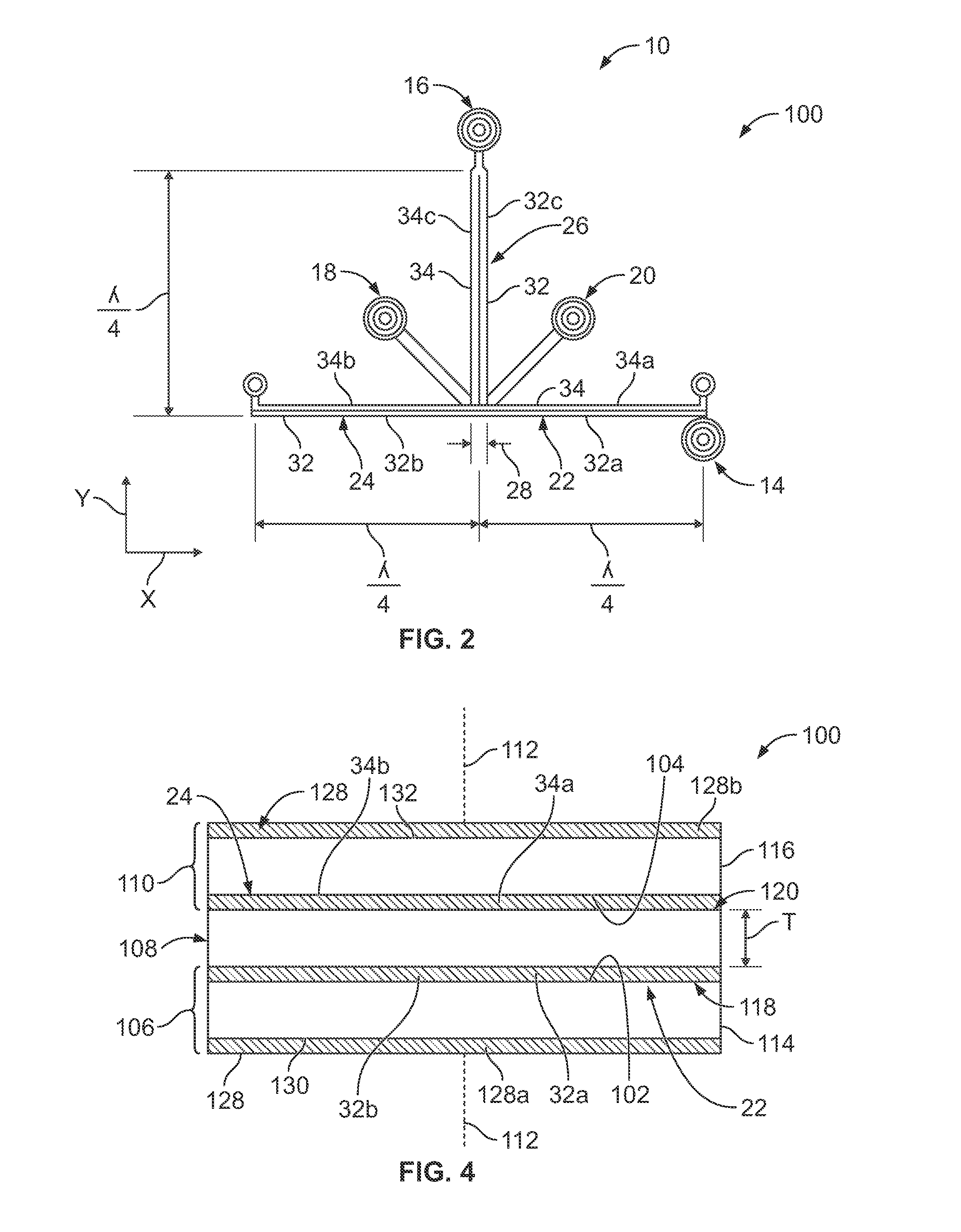180 degree hybrid coupler and dual-linearly polarized antenna feed network
a hybrid coupler and dual-linear polarized technology, applied in coupling devices, basic electric elements, waveguide type devices, etc., can solve the problems of increasing the size of a host device, limiting the number of hybrid couplers used, and limiting the number of host devices and/or associated devices that can be arranged
- Summary
- Abstract
- Description
- Claims
- Application Information
AI Technical Summary
Benefits of technology
Problems solved by technology
Method used
Image
Examples
Embodiment Construction
[0020]FIG. 1 is a schematic view of an embodiment of a 180° coupled-line hybrid coupler 10. The 180° hybrid coupler 10 includes a circuit 12 having two inputs 14 and 16 and two outputs 18 and 20. The circuit 12 includes three coupled-line couplers 22, 24, and 26 connected between the inputs 14 and 16 and the outputs 18 and 20. The circuit 12 also includes a transmission line 28 directly connected between two of the three coupled-line couplers 22, 24, and 26. As will be described below, each of the three coupled-line couplers 22, 24, and 26 is defined by one or more ground conductors 30 and only two signal conductors 32 and 34. Moreover, and as will be described below, the transmission line 28 may have an electrically short (i.e., small) length. In some embodiments, the transmission line 28 has an electrical length of zero.
[0021]The inputs 14 and 16 will be referred to herein as first and second inputs 14 and 16, respectively. The outputs 18 and 20 will be referred to herein as first...
PUM
 Login to View More
Login to View More Abstract
Description
Claims
Application Information
 Login to View More
Login to View More - R&D
- Intellectual Property
- Life Sciences
- Materials
- Tech Scout
- Unparalleled Data Quality
- Higher Quality Content
- 60% Fewer Hallucinations
Browse by: Latest US Patents, China's latest patents, Technical Efficacy Thesaurus, Application Domain, Technology Topic, Popular Technical Reports.
© 2025 PatSnap. All rights reserved.Legal|Privacy policy|Modern Slavery Act Transparency Statement|Sitemap|About US| Contact US: help@patsnap.com



